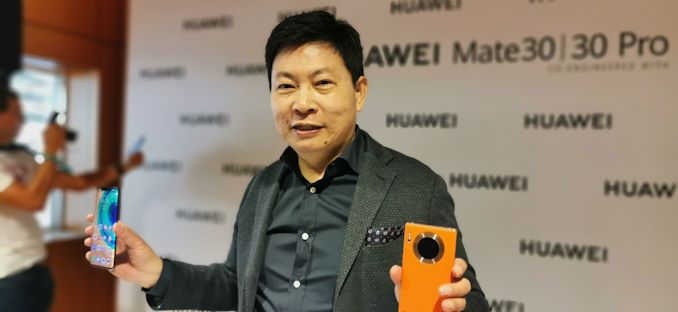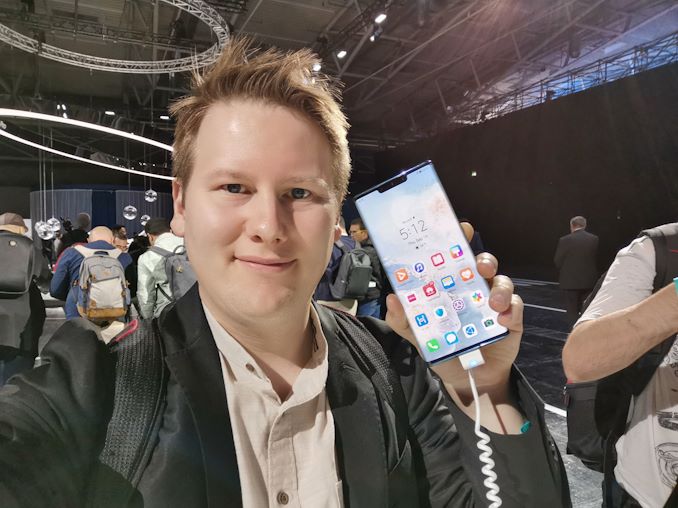A Day with the Huawei Mate 30 Pro: Kirin 990 and 7680 FPS Slow Motion Tests
by Dr. Ian Cutress on September 23, 2019 4:00 AM EST- Posted in
- Smartphones
- Huawei
- Kirin 990
- Mate 30 Pro
- 7680fps
Final Thoughts
The big question on everyone’s lips is whether Huawei can survive without the Play Store, and then in turn, without Google’s main apps like Gmail, YouTube, or Maps.
To address things first, no, Google Play Store cannot be side loaded. It requires Google’s Mobile Services (GMS), which are not enabled on the new Huawei smartphones. Huawei will not give users directions on how to install GMS, however we are expecting them to unlock the boot loader to give users kernel access. Also, Huawei has officially stated that they will not instruct retailers to give directions how to get around it, though retailers are more than welcome to help users get around that issue, but Huawei will not assist.
If the US-China issue is solved, the CEO has stated that they are able to reinstate GMS and Google’s Apps overnight. Until that point, users are directed to Huawei’s own app store (called App Gallery), and other app stores, that contain the most popular applications (Facebook, Instagram, Whatsapp – these apps can be sideloaded from apks anyway). Huawei is putting $1B into enhancing its own app store, to encourage developers to create applications for Huawei.
Until it gets sorted out, Huawei’s recommendations for anyone wanting to use Google Apps is simple: most of the applications can be accessed through the web. Gmail, Photos, Docs, Calendar, Maps, and others all have their own web interfaces, and so users could just create shortcuts on the main screen to these websites. For certain things like Google Fit, or Google Drive, it gets a bit more complex. Unfortunately,
I don’t think that the lack of Google’s apps is the main issue here – it’s the lack of the Play Store. Even though most casual users flip between the same few basic applications, when it comes to things like Evernote, Uber/Lyft, Otter, BBC News, VLC, Dropbox, Airline apps, I’m going to have to side load them all, and there’s no guarantee of continual updates. It’s going to be a pain. Add on top of that, there is no Google Pay, which I’ve started to use frequently.
Could I use the Mate 30 Pro without the Play Store as a daily device? I believe so – I think I could manage for the most part, and for the few items that won’t work, I would have to find alternatives. But ultimately it’s a high bar to entry, and I would have to spend an hour or two with the device making sure I have my primary apps installed from the beginning.
As for the features of the smartphone, I like the display, although aside from removing the side bezels, there isn’t much use for the wrap-around nature. Not having a physical volume key isn’t a problem for me, and my grip on the phone ultimately hasn’t changed much. It would be interesting to have it in a case, given that I almost always use a case, and to see if that affects anything. The display is bright, and the size is good, and the performance seems more than adequate. Assuming the software ecosystem can come into play here, the device handles itself really well.
For the photography, this early sample (non-final software) is a bit hit and miss. The standard photos don’t look as great as my P30 Pro, which might be down to the P in P30 standing for photography. But that slow motion 7680 fps mode on the Mate 30 Pro is great. As long as you have enough light and can time it just right, this smartphone can easily provide a good slow motion camera if you are happy with the 720p resolution.
Huawei is set to launch the Mate 30 Pro in October, starting with China and a few select European countries. Other EU areas will come through Q4. Huawei will make other announcements about the Middle East and Latin America in due course, but has promised to release it there as well. Also upcoming is the 5G version, which is likely to show up further into Q4, at least in China to begin with. The 8 GB/256 GB model will retail for 1099 Euro, with the 5G version having the same specifications for 1199 Euro.
We will have a full proper review of the Kirin 990 chipset and the Mate 30 Pro, including display testing, full benchmarks, and battery life testing, over the next few weeks.













47 Comments
View All Comments
zepi - Monday, September 23, 2019 - link
These high FPS modes are in the end just tools.Depending on the creativity of the videographer and the limitations imposed by the restrictions they can be useful or useless gimmicks.
Duration restrictions are quite severe, so it is not clear that these are actually usable for capturing interesting things. This is difficult to assess without actually trying and learning to use these tools.
Often times setup for such video captures is so time consuming and expensive, that it is impossible to create repeatable exercises to master such restricted tools...
Still, it is nice to see such features.
StevenD - Monday, September 23, 2019 - link
The ultra high FPS stuff is always a gimmick, I am much more pleased with the results of a good 240 fps than the impressive but short-lived 960.7680 is something else though. I can see it being useful filming explosions, but in that case, it's even harder to get the right shot, especially if you're using consumable materials, and the phone might not survive every time.
olde94 - Monday, September 23, 2019 - link
As a tinkerer (diy guy) and an engineer having a camera that can capture 125 micro seconds is really something useful, even with the limit as long as "getting it to capture the right time span" is not an issue. But for creative use i hardly see the use, but i might not be creative enoughmdrejhon - Tuesday, September 24, 2019 - link
The high speed features are not necessarily gimmicks for study purposes - for example, the analysis of displays benefits well from a true native 1000fps (and higher) high speed camera. High speed videos of display refresh cycles at http://www.blurbusters.com/scanout is one good example of high speed video becoming accessible to DIY researchers and student scientists who otherwise could not afford a high speed camera.alexvoda - Monday, September 23, 2019 - link
Just like removing the headphone jack (and not replacing it with another port) is stupid, removing the volume buttons is stupid.Something that before you could previously control just by using touch, now requires you to look at the phone.
I really wonder when we will outgrow this trend of removing physical controls in phones, cars and everything in between.
zepi - Monday, September 23, 2019 - link
Volume control is handled by the BT-headphones.close - Monday, September 23, 2019 - link
That's just one of the use cases. Turning the volume up or down for the ringer or any app streaming/casting to another device is another. And yes, you can always do it from software but it requires enough additional steps to make it annoying *every time* with no workaround.soliloquist - Monday, September 23, 2019 - link
Or when you are using the phone... you know, as a phone.I know no one does that anymore. But in that off chance that people want to actually talk to each other, being able to change the volume without moving the phone away from your ear/mouth is helpful.
not_anton - Sunday, September 29, 2019 - link
(AirPods user) Yea, sure...BedfordTim - Monday, September 23, 2019 - link
Especially when you have the phone in a case to protect the wrap around screen.